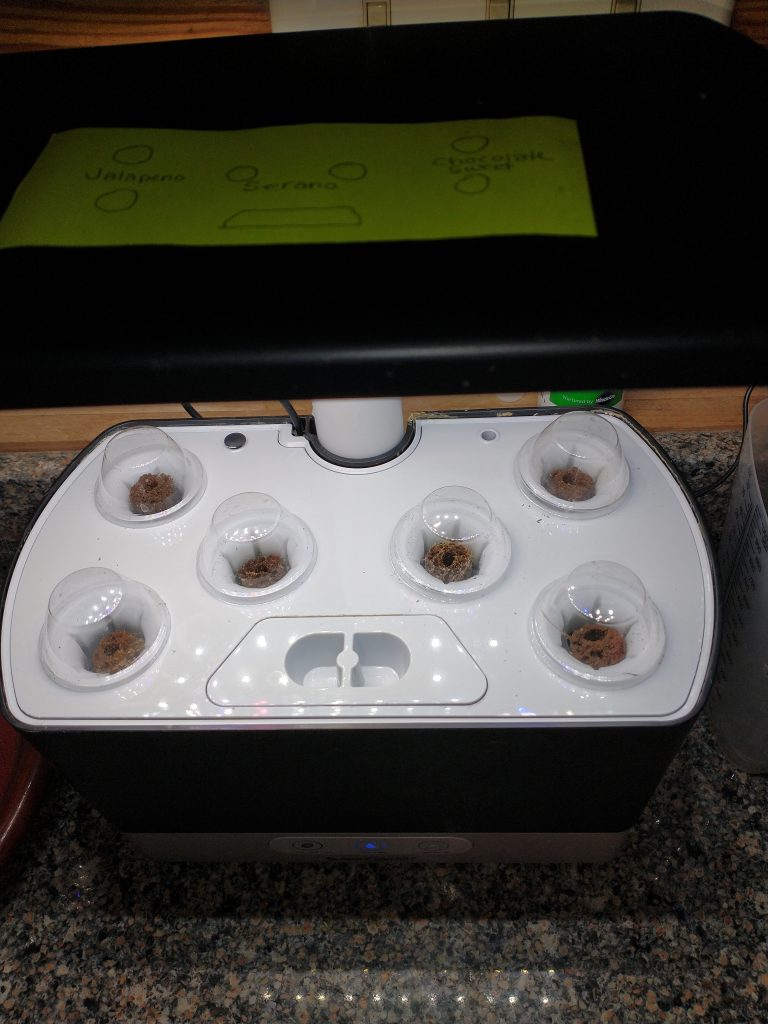Today is chilly and rainy, the beginning of a cold front that will bring snow to some extent on Sunday and Monday, but it is 8 weeks to our last average frost date, the time to start slow seeds.
Yesterday, the Aerogarden was dismantled, scrubbed, the parts that could go in the dishwasher for more thorough scrubbing done, then left to dry overnight. This morning, it was set up, filled with water and fed, and two each of 3 peppers started in it under it’s lights. Two Jalapenos, two seranos, and two Chocolate Sweet peppers. Once pepper starts are available at the nursery, a ghost and a cayenne will be added.

The self watering seed starter was begun with fresh seed starter mix that is organic and has no peat in it. In my environmental awareness move, peat is eliminated as it is not a quickly renewable resource. The seed starter, placed under the grow light has 2 tomatillos, 4 Amish paste tomatoes, 2 slicers that carry the black gene so produce a darker, purplish/brownish medium size tomato, and 2 common sage plants. The pots with basils, thyme, dill, and lettuces are thriving on a shelf in the south facing fully windowed doors. Hopefully, the parsley in the half barrel in the back will come back up this spring and the rosemary overwintered indoors nicely. There is a lot of oregano in the bed with the fig that will hopefully continue to produce after the snow melts off next week.

In reviewing the seed supply, I remembered two vegetable seed packets purchased earlier that were not accounted for in the garden plan, so that will have to be revisited before digging in the garden can commence. It is almost time to plant spinach, carrots, and peas.
Fortunately, the apple, pear, and peach trees did not bloom before this freeze. Maybe a week of cold will delay their blooming long enough that fruit is still possible.
There is a supply of starter pots that can be filled with seed starter mix in a few more weeks to start the squash and cucumbers in, but they only need about 4 weeks head start. The plastic webbed baskets will be washed out once there are seedlings that need to be hardened off. Some produce I have grown in the past in limited, mostly unsuccessful attempts will not be grown as those products are readily available from local farmers at their farms or the farmer’s market.
As the weather is behaving like winter, it is nice to be planning the summer garden. In late April or early May, two new hives of bees will be introduced, hopefully with greater success than last year. Plans being made, plans begun, hoping for a successful season with vegetables, fruits, eggs, and bees for eventual honey. A busy season ahead, I hope I can stay on top of it.
As the grass is beginning to green up and grow with a vengeance, the riding mower was taken back to the shop to figure out why the blades won’t engage and throw the belt every time it is disengaged when it did work. Less area will be mowed this year and more left for the hay guys.

